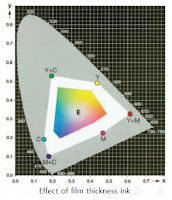Struktur plastik
Bahan baku produk plastik adalah minyak mentah, gas alam dan batu bara sebagai pembawa karbon. Saat ini, minyak pirolisis dari pabrik daur ulang terkadang digunakan sebagai bahan awal.
Nama plastik adalah istilah kolektif untuk bahan makromolekul yang diproduksi secara sintetis atau dengan mengubah produk alami. Makromolekul ini terdiri dari individu, komponen molekul terkait kimia, yang disebut monomer.
Ketika monomer dirantai bersama, apa yang disebut polimer dibuat. Sebuah rantai polimer tunggal dapat dibentuk dari beberapa ribu monomer.
Plastik dapat terdiri dari molekul linier, bercabang atau ikatan silang. Makromolekul linier dan bercabang, yang, bagaimanapun, tidak terkait silang, dibuat bergerak oleh penerapan panas. Molekul dapat meluncur satu sama lain, yaitu bahannya dapat mengalir dan dapat ditempa. Inilah sebabnya mengapa bahan polimer ini disebut termoplastik. Semakin panjang rantai molekul dalam plastik, semakin tinggi sifat kekuatannya. Profil sifat termoplastik berkisar dari lunak hingga keras-keras atau rapuh keras.
Dalam kasus elastomer, makromolekul saling terkait secara lemah. Pada suhu kamar mereka berada dalam keadaan karet-elastis karena mobilitas rantainya yang tinggi.
Elastomer tidak dapat dicairkan dan tidak larut.
Plastik dengan rantai molekul jaringan yang kuat secara spasial dikenal sebagai duromer. Mereka berperilaku keras dan rapuh pada suhu kamar. Seperti elastomer, mereka tidak larut dan tidak dapat diserap.
Ada juga yang disebut elastomer termoplastik (TPE), yaitu plastik seperti karet yang dapat dilebur. Seperti termoplastik, mereka terdiri dari molekul benang. Dalam elastomer termoplastik, bagaimanapun, molekul benang memiliki segmen molekul individu yang begitu kuat tertarik satu sama lain sehingga mereka bertindak seperti jaringan.
















